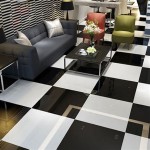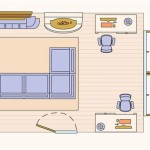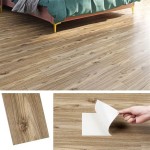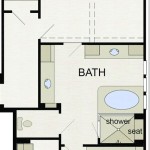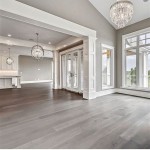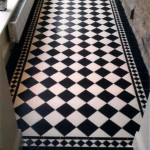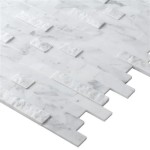Black Floor Mats For Gyms: A Comprehensive Guide
Gym flooring is a critical component of any fitness facility, impacting safety, performance, and aesthetics. Among the various options available, black floor mats are a popular choice for gyms due to their versatility, durability, and practical benefits. This article explores the advantages of using black floor mats in gyms, the different types of mats available, factors to consider when selecting them, proper installation techniques, and essential maintenance practices.
Advantages of Black Floor Mats in Gyms
Black floor mats offer a multitude of advantages for gym owners and users alike. These advantages extend beyond mere aesthetics, influencing the overall gym environment and its functionality.
Durability and Protection: Gym floors are subjected to significant stress from dropped weights, heavy equipment, and constant foot traffic. Black floor mats, particularly those made from rubber, provide a durable and protective surface. They absorb impact, preventing damage to the subfloor and extending its lifespan. This protective quality is especially crucial in weightlifting areas where heavy weights are frequently dropped. High-density rubber mats can withstand considerable force, minimizing the risk of cracks, dents, or scratches on the underlying floor.
Safety and Injury Prevention: The safety of gym users is paramount. Black floor mats enhance safety by providing a non-slip surface that reduces the risk of slips, trips, and falls. This is particularly important during high-intensity workouts where users may be sweating and moving quickly. The cushioning provided by the mats also helps to absorb impact, reducing the strain on joints and muscles. This can contribute to injury prevention, particularly for activities involving jumping or repetitive movements. Furthermore, thick floor mats can help reduce the risk of injuries from dropped weights by absorbing some of the impact force.
Noise Reduction: Gyms can be noisy environments due to the clanging of weights, the thud of equipment, and the general bustle of activity. Black floor mats, especially those made from rubber, offer excellent sound absorption properties. They help to dampen noise levels, creating a more pleasant and focused workout environment. This is particularly beneficial in multi-story buildings or gyms located in residential areas, where noise pollution can be a concern. The mats reduce the transmission of sound through the floor, minimizing disturbances to other areas of the building.
Aesthetics and Versatility: Black floor mats offer a clean and professional aesthetic that complements a wide range of gym designs. The neutral color blends seamlessly with other gym equipment and décor, creating a cohesive and visually appealing space. They are also highly versatile, suitable for various gym areas, including weightlifting zones, cardio areas, group fitness studios, and stretching spaces. The uniformity of black flooring can create a sense of order and spaciousness, enhancing the overall gym experience.
Ease of Maintenance: Black floor mats are relatively easy to clean and maintain, contributing to a hygienic gym environment. They can be easily swept or vacuumed to remove dirt and debris. For more thorough cleaning, they can be mopped with a mild detergent solution. The dark color also helps to conceal dirt and stains, reducing the need for frequent cleaning. Regular cleaning helps to prevent the buildup of bacteria and fungi, promoting a healthier workout environment.
Types of Black Floor Mats for Gyms
The market offers a variety of black floor mats designed to meet the specific needs of different gym environments. The choice of mat type depends on factors such as the intended use, the size of the area to be covered, and the budget.
Rubber Mats: Rubber mats are the most common type of flooring used in gyms due to their durability, shock absorption, and slip resistance. They are typically made from recycled or virgin rubber. Recycled rubber mats are an environmentally friendly option, while virgin rubber mats offer superior durability and resilience. Rubber mats are available in various thicknesses, ranging from thin mats suitable for cardio areas to thick mats designed for weightlifting platforms. Interlocking rubber tiles are a popular choice as they provide a seamless and customizable flooring solution.
Foam Mats: Foam mats, typically made from EVA (ethylene-vinyl acetate) foam, are a softer and more lightweight option compared to rubber mats. They are often used in areas where cushioning is a priority, such as yoga studios, Pilates studios, or children's play areas. Foam mats are available in interlocking tile format, making them easy to install and customize. While foam mats offer good shock absorption, they are less durable than rubber mats and may not be suitable for areas with heavy equipment or dropped weights.
Carpet Tiles: Carpet tiles offer a more aesthetically pleasing option compared to rubber or foam mats. They can provide a comfortable and warm surface for exercises such as stretching and yoga. Carpet tiles are available in various colors and patterns, allowing for customization of the gym's flooring design. However, carpet tiles are less durable than rubber or foam mats and may not be suitable for areas with heavy use or potential for spills. They also require more frequent cleaning to maintain hygiene.
Specialty Mats: In addition to the standard types of mats, there are also specialty mats designed for specific purposes. For example, anti-fatigue mats are designed to reduce fatigue and discomfort for individuals who stand for long periods, such as receptionists or trainers. Weightlifting platforms often incorporate thick rubber mats with a wood center to provide a stable and shock-absorbing surface for Olympic lifting. Turf mats are designed to mimic the look and feel of natural grass, providing a suitable surface for sled pushes and other functional training exercises.
Factors to Consider When Selecting Black Floor Mats
Selecting the right black floor mats for a gym requires careful consideration of various factors to ensure that the chosen mats meet the specific needs of the facility and its users.
Intended Use: The primary factor to consider is the intended use of the mats. Different areas of the gym require different types of flooring. Weightlifting areas require thick, durable rubber mats, while cardio areas may benefit from thinner rubber mats or foam mats. Group fitness studios may require a combination of rubber mats and foam mats, depending on the types of activities performed. Understanding the specific needs of each area will help to narrow down the options.
Thickness and Density: The thickness and density of the mats are crucial factors in determining their durability and shock absorption properties. Thicker and denser mats provide better protection for the subfloor and offer more cushioning for users. Weightlifting areas should use mats with a thickness of at least ½ inch, while cardio areas may be suitable for mats with a thickness of ¼ inch. The density of the mat also affects its ability to withstand impact and resist deformation.
Material: The material of the mat is a key determinant of its durability, slip resistance, and ease of maintenance. Rubber mats are generally the most durable and slip-resistant option, while foam mats offer more cushioning. Carpet tiles provide a more aesthetically pleasing option but are less durable and require more maintenance. Consider the pros and cons of each material before making a decision.
Size and Shape: Black floor mats are available in various sizes and shapes, including rolls, squares, and interlocking tiles. Rolls are a good option for covering large areas, while squares and interlocking tiles offer more flexibility in terms of customization. Interlocking tiles are particularly useful for creating a seamless and visually appealing flooring surface. Consider the size and shape of the area to be covered and choose mats that are easy to install and fit properly.
Budget: The budget is always a consideration when selecting gym flooring. Rubber mats are generally more expensive than foam mats, while carpet tiles fall somewhere in between. Consider the long-term costs of maintenance and replacement when making a decision. Investing in high-quality mats may be more expensive upfront, but it can save money in the long run by reducing the need for repairs and replacements.
Installation and Maintenance of Black Floor Mats
Proper installation and regular maintenance are essential for ensuring the longevity and performance of black floor mats in a gym setting. Incorrect installation can lead to uneven surfaces, gaps, and potential safety hazards, while inadequate maintenance can result in premature wear and tear, as well as the buildup of dirt, bacteria, and odors.
Installation Procedures: The installation process varies depending on the type of mat. Rolls typically require adhesive to secure them to the subfloor, while squares and interlocking tiles may not require adhesive. Ensure the subfloor is clean, dry, and level before installing the mats. Follow the manufacturer's instructions carefully to ensure proper installation. When installing interlocking tiles, start in one corner of the room and work your way outwards, ensuring that the tiles are securely connected. Use a utility knife to trim the mats to fit around walls and obstacles.
Cleaning and Disinfection: Regular cleaning is essential for maintaining a hygienic gym environment. Sweep or vacuum the mats regularly to remove dirt and debris. For more thorough cleaning, mop the mats with a mild detergent solution. Avoid using harsh chemicals or abrasive cleaners, as these can damage the mats. Disinfect the mats regularly to kill bacteria and fungi. Use a disinfectant solution that is specifically designed for use on gym flooring. Ensure the mats are completely dry before allowing users to walk on them.
Preventative Maintenance: Preventative maintenance can help to extend the lifespan of the mats and prevent costly repairs. Rotate the mats periodically to distribute wear evenly. Inspect the mats regularly for signs of damage, such as tears, cracks, or dents. Repair any damage promptly to prevent it from worsening. Place protective mats under heavy equipment to prevent damage to the flooring. Encourage users to wipe down equipment after use to prevent the buildup of sweat and dirt.

Commercial Gym Flooring Singapore Sole Fitness

Rubber Mats Gym Tiles Black 500x500mm 15mm

Vevor 25 Pcs 1 2 Inch Thick Gym Floor Mats 24 X Eva Foam Rubber Top Interlocking Workout With 100 Sq Ft Coverage Waterproof Exercise Puzzle Flooring For Home

What Are The Best Gym Floor Mats Black Plain Rubber Solid Top Mat Square At 550 Piece In

Wf Athletic Supply Black 60 In W X 84 L 7mm T Large Premium Vinyl Gym Flooring Mat Heavy Duty Workout Covers 35 Sq Ft Mtwf 0775 Bk The Home

Gym Flooring Soundproof Pad Shock Absorbing Mat Strength Barbell Area Treadmill Non Slip Proof Epdm Floor Mats For Sale Rubber Made In Com

Groundsmart Rubber Gym Tiles 50 Pack Gray Black Speckled Floor Mats Exercise 200 Sq Ft

Rubber Floor Mat 100x100x1 50cm Black Exercise Mats Bbclub

Rubber Gym Flooring Tile 25mm Floors

Powerstock Home Gym Floor Mats
